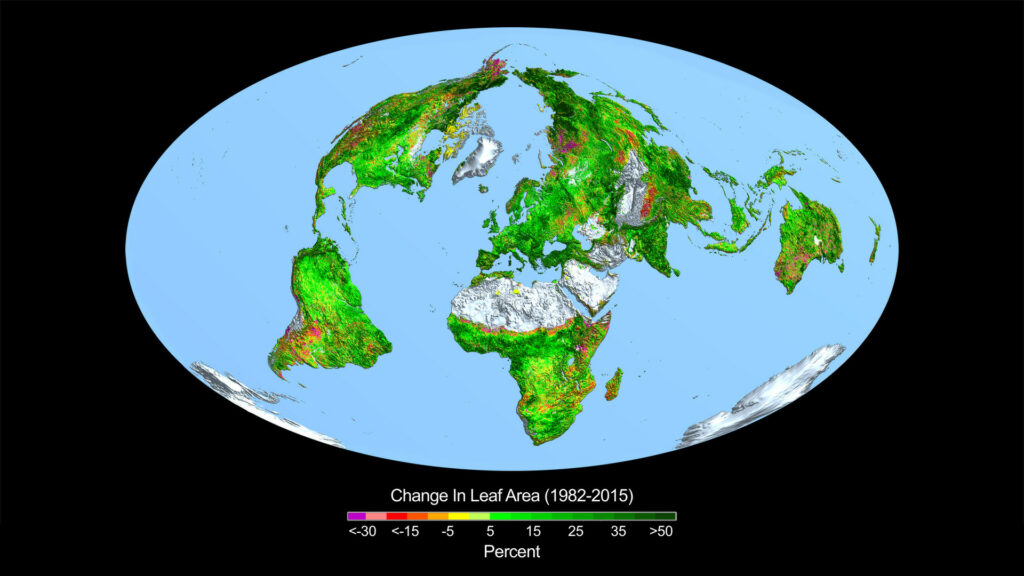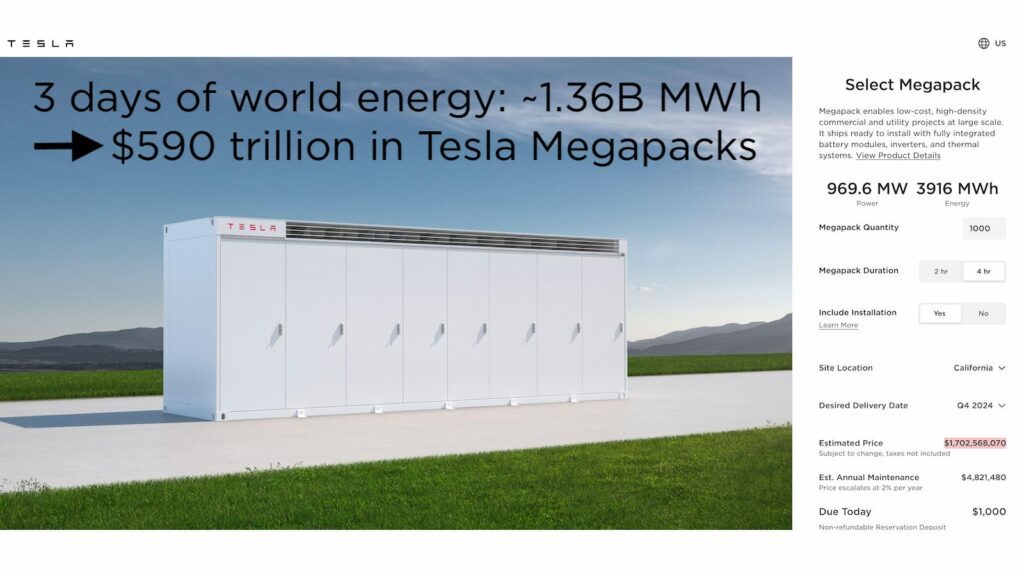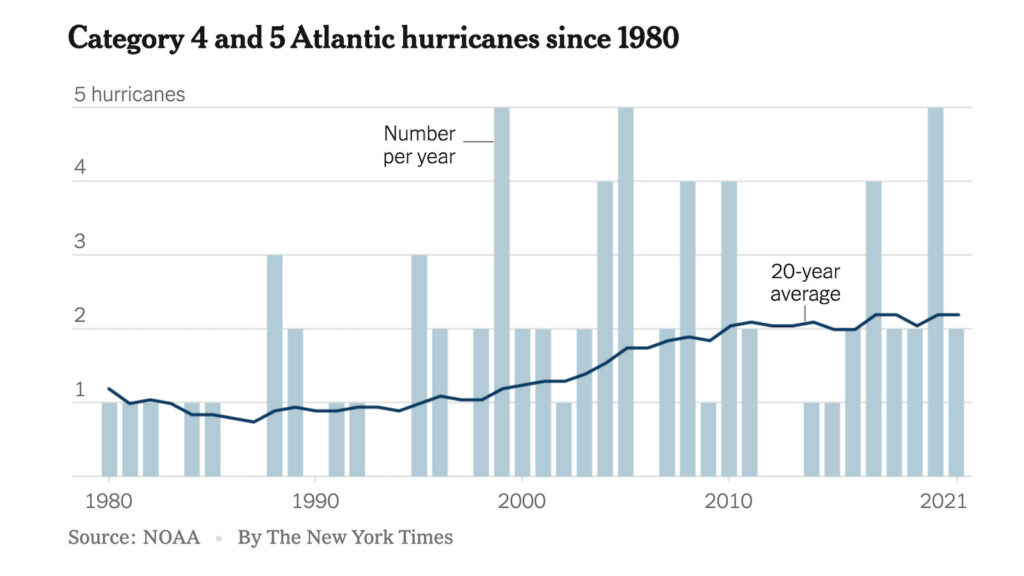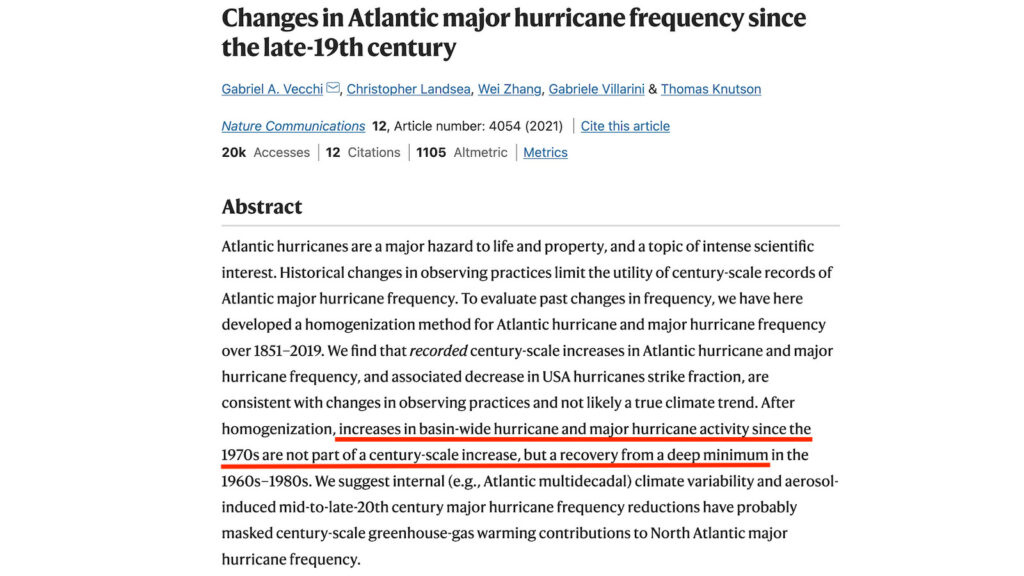Talking points on: the benefits of fossil fuels; myths about fossil fuels; climate; extreme weather; solar
For over 2 years now, I’ve been creating Energy Talking Points—concise, powerful, well-referenced talking points on energy, environmental, and climate issues.
Here are some of my favorites.
If you like them, please share them and encourage others to subscribe to this free newsletter.
Benefits of Fossil Fuels
- Undeniable energy fact 1: Cost-effective energy is essential to human flourishing
Cost-effective energy—affordable, reliable, versatile, scalable energy—is essential to human flourishing because gives us the ability to use machines to become productive and prosperous. - Undeniable energy fact 2: The world needs much more energy
Billions of people lack the cost-effective energy they need to flourish. 3 billion use less electricity than a typical American refrigerator. 1/3 of the world uses wood/dung for heating/cooking. Much more energy is needed.¹ - Undeniable energy fact 3: Fossil fuels are uniquely cost-effective
Despite 100+ years of aggressive competition, fossil fuels provide 80%+ of the world’s energy and they are still growing—especially in the countries most concerned with cost-effective energy. E.g., China.² - Undeniable energy fact 4: Unreliable solar/wind are failing to replace fossil fuels
Despite claims that solar + wind are rapidly replacing fossil fuels, they provide < 5% of world energy—only electricity, ⅕ of energy—and even that depends on huge subsidies and reliable (mostly fossil-fueled) power plants.³ - Undeniable energy fact 5: Fossil fuel energy gives us an incredible climate mastery ability
Fossil fuels have helped drive down climate disaster deaths by 98% over the last century by powering the amazing machines that protect us against storms, extreme temperatures, and drought.⁴

Myths about fossil fuels
- Myth: The TX winter blackouts were a failure of fossil fuels, especially natural gas.
Truth: Fossil fuels perform beautifully in far worse winter weather than Texas had in February 2021. TX blackouts were caused by defunding reliable/resilient power in favor of unreliable solar/wind.⁵ - Myth: Replacing fossil fuels with solar/wind will make us more secure because we’ll depend less on hostile countries.
Truth: Not only are solar/wind incapable of replacing fossil fuels, but the control of their supply by China dwarfs any nation’s influence over fossil fuels.⁶ - Myth: Continued CO2 emissions will cause “irreversible” climate change.
Truth: At some point future technologies will enable us to reverse the rise in CO2 levels if we want. But nothing can reverse mass-death caused by trying to rapidly eliminate CO2 emissions.⁷ - Myth: Fossil fuels “kill” millions of people a year via air pollution.
Truth: This claim1. Ignores how fossil fuels extend every life on Earth2. Uses pseudoscientific speculation about pollution deaths.3. Ignores the fact that fossil fuels can be burned very cleanly.⁸ - Myth: The anti-fossil-fuel movement is leading to better sources of energy.
Truth: Anti-fossil-fuel activists are responsible for artificially restricting the supply of fossil fuels and thereby causing a deadly, worsening global energy crisis.⁹
Big-picture facts about energy and climate
- Fossil fuel energy gives us an incredible climate mastery abilityFossil fuels have helped drive down climate disaster deaths by 98% over the last century by powering the amazing machines that protect us against storms, extreme temperatures, and drought.¹⁰

- Undeniable climate fact: CO2 emissions correlate with 1°C warming, + greeningFossil fuels’ CO2 emissions have contributed to the warming of the last 170 years, but that warming has been mild and manageable—1° C. Here’s what that looks like compared to normal temp changes.¹¹


- Undeniable climate fact: Deaths from cold far exceed deaths from heatWhile leading institutions portray a world as increasingly riddled with heat-related death, the fact is that even though Earth has gotten 1°C warmer far more people die from cold than heat (even in India!).¹²
- Undeniable climate fact: Warming from CO2 occurs more in colder placesThe mainstream view in climate science is that more warming will be concentrated in colder places (Northern latitudes) and at colder times (nighttime) and during colder seasons (winter). This is good news.¹³

- Undeniable climate fact: Rising CO2 leads to diminishing warmingMainstream climate science is unanimous about a conclusion that the public is, shamefully, not made aware of: the “greenhouse effect” of CO2 is a diminishing effect, with additional CO2 leading to less warming.
The truth about alternatives
- Myth: We can rapidly reduce fossil fuels at very low cost.
Truth: Fossil fuels are a uniquely cost-effective form of energy, which is why they are 80% of global energy and still growing. Rapidly reducing fossil fuels, in a world that needs far more energy, is catastrophic.¹⁴ - Myth: Solar and wind are cheap.
Truth: Solar and wind are unreliable, parasitical sources of energy that add costs to the grid. Claims of “cheapness” are based on ignoring the full costs of solar + wind—above all the cost of a reliable grid that gives them 24/7 life support.¹⁵ - Myth: Solar/wind is cheaper than fossil fuels because Lazard’s “Levelized Cost of Energy” (LCOE) is lower for solar/wind.
Truth: LCOE, by Lazard’s own admission, doesn’t include many costs of solar/wind—above all the cost of a reliable grid needed for 24/7 life support.¹⁶ - Myth: Solar and wind are “winning in the marketplace,” outcompeting fossil fuels and nuclear with superior economics.
Truth: Unreliable, parasitical solar and wind are only “winning” when given massive preferences—mandates, subsidies, and no penalty for unreliability.¹⁷ - Myth: Nuclear is too expensive, so we should use solar/wind instead.
Truth: Solar/wind can’t provide reliable energy; nuclear can. And nuclear is only expensive because it has, with the help of many “green” activists, been falsely labeled unsafe and effectively criminalized.¹⁸
Solar myths
- Myth: Just a small area of solar panels plus storage can power the world.Truth: Storing just 3 days of global energy would cost $590 trillion at Elon Musk’s current prices. And the panels would take up more space than all the world’s cities, towns, and villages combined.¹⁹

- Musk says that “to power the whole Earth” we need just solar panels and “some batteries. ”What is “some batteries”? To store a mere 3 days of world energy, to be prepared for weeks (let alone seasons) with lower-than-usual sunlight, takes >1,350 terawatt-hours in batteries.²⁰
- The world uses over 165k TWh of energy annually, or ~1.36 billion MWh in 3 days. 1000 Tesla Megapacks (3916 MWh of storage) have a price over >$1.7 billion. This would mean 3 days of storage using Tesla batteries would cost >$590 trillion. That’s 6X world GDP!²¹

- Arguing that solar panels and batteries can provide energy to 8 billion people using modest space is like arguing that Rolls-Royces can transport 8 billion people using modest space.Yes, there’s space for 8 billion Rolls-Royces—but the human time it would take to produce them is cost-prohibitive.
- The main lie of “Just a small area of solar panels can power the world” is that it ignores the insane cost of the necessary batteries.But it also drastically underestimates how much space solar panels require.For example, this viral Twitter post underestimates the area by some 25 times.²²

- If 1.8 million square km of solar panels doesn’t seem like much, note that it is more than all cities, towns, villages, and human infrastructure combined (~1.5 million sq km).And this excludes the huge footprints of solar and battery mining, manufacturing, and transmission.²³
Myth: We can be like other countries who have 80% “clean electricity”
- The most persuasive argument for the Biden Administration’s radical policy of 80% “clean electricity” by 2030 is that other countries are already at 80%. But this is BS because those countries, unlike us, can use huge amounts of 1) nuclear, 2) hydro, or 3) imported power.
- In response to worries that the reconciliation bill’s policy of 80% “clean electricity” by 2030—from 30% today—will cause reliability problems, a group of prominent green electricity advocates recently claimed in an open letter that “reliability can be preserved and enhanced.”

- The most compelling argument given for reliable 80% clean electricity by 2030 is that other places, such as France and Ontario, have already achieved this. But this is a deeply dishonest comparison because those places can, unlike us, use huge amounts of nuclear and hydro.

- France gets 2/3 of its electricity from reliable nuclear power. Ontario gets a combined 80% of its electricity from nuclear power and hydropower. By contrast, the US gets 20% of electricity from nuclear and <7% from hydro–neither of which can meaningfully increase by 2030.²⁴

- There is no place in the world that gets a large share of its electricity from solar and wind without huge imports from its neighbors’ reliable–not solar+wind–power plants. And yet the US, which cannot import most of its needed electricity, is considering 50%+ solar and wind!
ESG
- The preposterous financial pretense of “ESG investing” is that the promoters of it have so accurately identified universal norms of long-term value creation–Environmental norms, Social norms, and Governance norms—that imposing those norms on every company is justified.
- In reality, ESG was a movement cooked up at the UN—not exactly a leading expert in profitable investment—to impose moral and political agendas, largely left-wing ones, on institutions that would not adopt them if left to their own devices.²⁵
- The number one practical policy advocated by the ESG movement today is: divest from fossil fuels in every way possible, and associate yourself with “renewable” solar and wind in every way possible. This policy is helping destroy energy production around the world.
- The most egregious immorality of the ESG movement, led by Larry Fink’s Blackrock, is its effort to destroy vital fossil fuel projects in poor places that desperately need them. This effort is guaranteed to perpetuate poverty.²⁶

- Example of ESG poverty perpetuation: South Korea canceled new coal plants in South Africa and the Philippines after “Global investors including Blackrock…warned the South Korean utility to drop coal power projects.”²⁷
Extreme weather
- Myth: The world is experiencing unprecedented danger from extreme weather thanks to fossil fuels.Truth: The world is experiencing unprecedented safety from extreme weather thanks to fossil fuels—because fossil fuels’ climate mastery benefits overwhelm any negative climate side-effects.²⁸

- Myth: We don’t need fossil fuels to protect ourselves from extreme weather—we can just use alternatives.Truth: As Europe is illustrating, there is no near-term replacement for fossil fuels for the 1/4 of the world that uses abundant energy—let alone the 3/4 of the world that doesn’t.²⁹
- Myth: Media claims about increasing hurricane frequency are accurate.Truth: Leading media outlets have deliberately misrepresented the flat long-term hurricane trend. E.g., the New York Times cherry-picking a starting point—the low point of 1980—to make a flat trend seem upward.³⁰


- Here’s recent US data for landfalling hurricanes, both overall and major. Again, consuming the New York Times and other trusted sources would you have any idea that the data looked like this?³¹

- Myth: Hurricane intensity is expected to get catastrophically higher as temperatures rise.Truth: Mainstream estimates say hurricanes will be less frequent and between 1-10% more intense. This is not at all catastrophic if we continue our fossil-fueled climate mastery.³²

1 IEA – Access to affordable, reliable, sustainable and modern energy for all
2 BP – Statistical Review of World Energy
4 For every million people on earth, annual deaths from climate-related causes (extreme temperature, drought, flood, storms, wildfires) declined 98%–from an average of 247 per year during the 1920s to 2.5 in per year during the 2010s.
Data on disaster deaths come from EM-DAT, CRED / UCLouvain, Brussels, Belgium – www.emdat.be (D. Guha-Sapir).
Population estimates for the 1920s from the Maddison Database 2010 come from the Groningen Growth and Development Centre, Faculty of Economics and Business at University of Groningen. For years not shown population is assumed to have grown at a steady rate.
Population estimates for the 2010s come from World Bank Data.
5 Dessler on The Joe Rogan Experience, from 12:39-14:36.
Epstein’s unrefuted explanation to Dessler, from 15:44-16:24.
Alex Epstein – Talking Points on the Texas Electricity Crisis
Alex Epstein – Talking Points on Resilience
6 Dessler on The Joe Rogan Experience, from 1:19:07-1:19:52.
Epstein’s unrefuted explanation to Dessler, from 39:45-40:49.
Alex Epstein – How the Biden Administration threatens energy security
7 Dessler on The Joe Rogan Experience, from 1:28:40-1:29:23.
Epstein’s unrefuted explanation to Dessler, from 24:23-24:54.
8 Dessler on The Joe Rogan Experience, from 1:04:07-1:10:14.
Alex Epstein – The “fossil fuels cause 1 in 5 deaths” myth
9 Dessler on The Joe Rogan Experience, from 6:18-8:11.
Epstein’s unrefuted explanation to Dessler, from 15:44-16:24.
10 For every million people on earth, annual deaths from climate-related causes (extreme temperature, drought, flood, storms, wildfires) declined 98%–from an average of 247 per year during the 1920s to 2.5 in per year during the 2010s.
Data on disaster deaths come from EM-DAT, CRED / UCLouvain, Brussels, Belgium – www.emdat.be (D. Guha-Sapir).
Population estimates for the 1920s from the Maddison Database 2010 come from the Groningen Growth and Development Centre, Faculty of Economics and Business at University of Groningen. For years not shown population is assumed to have grown at a steady rate.
Population estimates for the 2010s come from World Bank Data.
11 NASA – GISS Surface Temperature Analysis
13 NOAA – Climate change rule of thumb: cold “things” warming faster than warm things
14 Dessler on The Joe Rogan Experience, from 48:34-48:57.
Epstein’s unrefuted explanation to Dessler, from 15:24-16:24.
BP – Statistical Review of World Energy
15 Dessler on The Joe Rogan Experience, from 4:55-5:45.
Epstein’s unrefuted explanation to Dessler, from 29:54-31:28.
16 Dessler on The Joe Rogan Experience, from 4:55-5:45.
Epstein’s unrefuted explanation to Dessler, from 29:54-31:28.
“Other factors would also have a potentially significant effect on the results contained herein, but have not been examined in the scope of this current analysis. These additional factors, among others, could include: capacity value vs. energy value; network upgrades, transmission, congestion or other integration-related costs…”
“This analysis does not take into account potential social and environmental externalities or reliability-related considerations”
Lazard’s Levelized Cost of Energy Analysis — Version 14.0
17 Dessler on The Joe Rogan Experience, from 50:00-52:44.
Epstein’s unrefuted explanation to Dessler, from 31:08-31:29.
18 Dessler on The Joe Rogan Experience, from 7:34-8:11.
Epstein’s unrefuted explanation to Dessler, from 25:23-26:44.
21 BP – Statistical Review of World Energy
World Bank Data – GDP (Current $US)
23 The world has a land area of almost 150 million square km. Only about 1% are “built-up” areas like villages, towns, cities, and other human infrastructure.
Our World in Data – How urban is the world?
24 Our World in Data – France: Energy Country Profile
Ontario Energy Board – Ontario’s System-Wide Electricity Supply Mix: 2020 Data
U.S. Energy Information Administration – Electric Power Annual table 3.1.A
25 Betsy Atkins – Demystifying ESG: Its History & Current Status
26 Meme circulating on Twitter
27 Power Engineering International
28 For every million people on earth, annual deaths from climate-related causes (extreme temperature, drought, flood, storms, wildfires) declined 98%–from an average of 247 per year during the 1920s to 2.5 in per year during the 2010s.
Data on disaster deaths come from EM-DAT, CRED / UCLouvain, Brussels, Belgium – www.emdat.be (D. Guha-Sapir).
Population estimates for the 1920s from the Maddison Database 2010 come from the Groningen Growth and Development Centre, Faculty of Economics and Business at University of Groningen. For years not shown, population is assumed to have grown at a steady rate.
Population estimates for the 2010s come from World Bank Data.
29 Alex Epstein – Talking Points on Earth Day truth: Fossil fuels make Earth BETTER
30 New York Time – Ian Moves North
Vecchi et al. (2021) – Changes in Atlantic major hurricane frequency since the late-19th century
32 NOAA – Global Warming and Hurricanes
Share This:




 CDN NEWS |
CDN NEWS |  US NEWS
US NEWS 




























COMMENTARY: Fossil Fuels Show Staying Power as EU Clean Energy Output Dips – Maguire